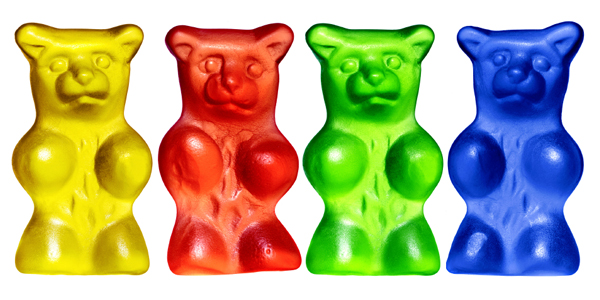
New: Early Mornings! Join us on Thursdays and Fridays in April, starting at 9 a.m.

Halloween has come and gone, and there are bags of leftover candy to prove it. Once you’ve had your fill of the sweet stuff, you can have plenty of fun with the leftover Halloween candy with science experiments! From sorting games with young children to candy chromatography, there is plenty to do with leftover Halloween candy that doesn’t involve consuming all that sugar. An all-time favorite experiment is finding out what happens when you soak gummy candies in water and other liquids. It might be fun to measure and compare different brands and colors, too.
You can start by filling a clear cup with water and dropping a gummy candy in it; you can even have several cups of water available and try different gummy candies in each cup. Make sure you measure and write down initial observations and make predictions about how they will look, taste and even smell. Check back in an hour, a few hours, a day and a couple of days and ask some of these questions: Do your gummies have bubbles on them? Are they larger? Did they change the color or smell of the water? Do they float? Can you see through the gummy candy? How do they feel? Do they bounce?
If you are thinking that water has filled up the gummy candy, then you are absolutely right! Water has entered it, filling in the spaces to make it seem like it grew. Gummy bears and other gummy candies begin their lives as a warm liquid solution of sugars, flavors, gelatin and water. As this solution cools and water is drawn out from the solution, they harden into their famous chewy texture. During the drying process the gelatin intertwines into a solid matrix, but not all the water is removed—otherwise gummy bears would be hard and not at all chewy. Gummy bears contain a small amount of water in them and for purposes of this experiment can be thought of as a solution of water.